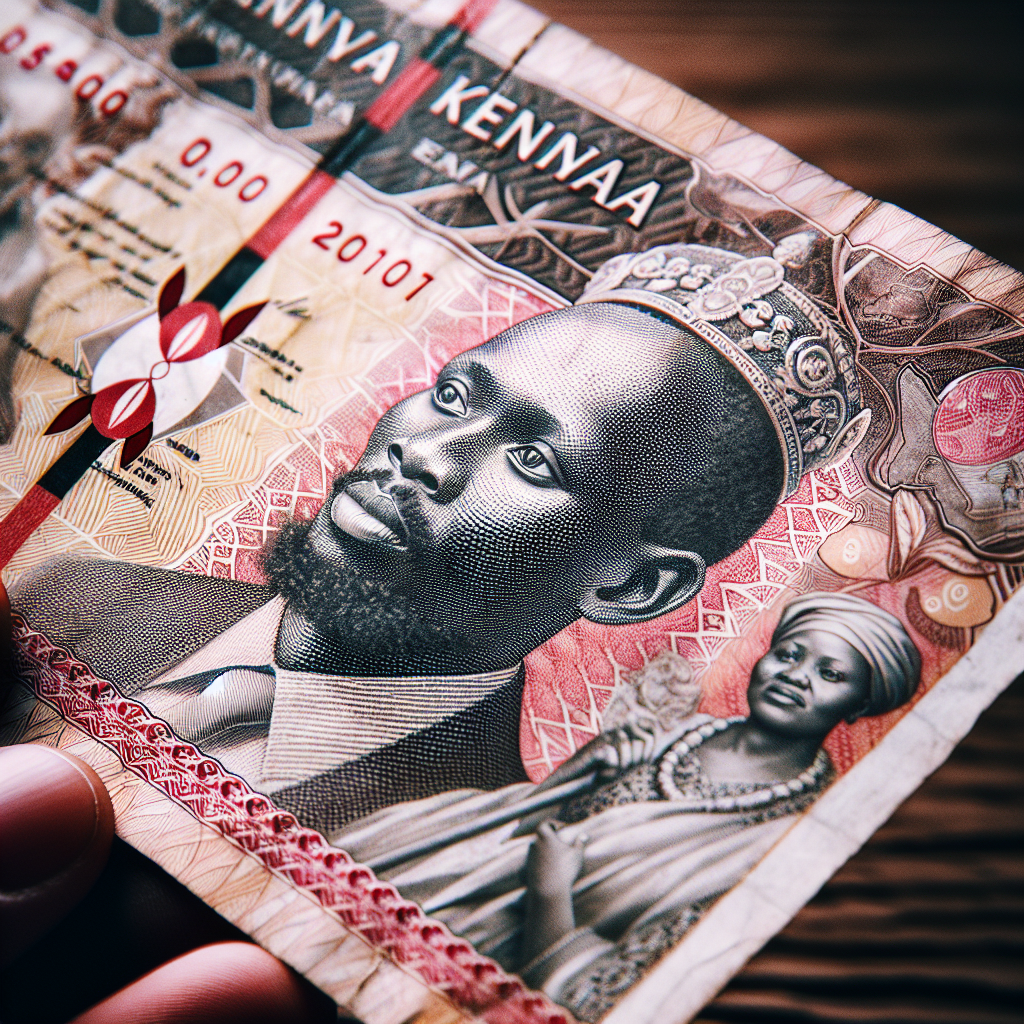How Has Kenya’s Economy Developed Since Independence?
Have you ever wondered about the incredible journey that Kenya’s economy has embarked on since gaining independence? It’s truly fascinating to see how this East African nation has transformed over the years. From its humble beginnings, Kenya has experienced significant economic development, witnessing a shift from a primarily agrarian society to a diversified economy driven by sectors such as tourism, manufacturing, and services. This article delves into the key milestones and factors that have shaped Kenya’s economic growth, providing an intriguing insight into the country’s journey towards prosperity.
Overview of Kenya’s Independence
Kenya, a country located in East Africa, gained its independence from British colonial rule on December 12, 1963. The struggle for independence was marked by years of political activism, protests, and negotiations, ultimately resulting in a self-governing nation. This marked a significant turning point for Kenya, as it set the stage for the country’s economic growth and development.
Independence from British rule
Kenya’s independence from British rule was a momentous event that paved the way for the country’s self-determination and the ability to shape its own economic destiny. Prior to independence, British colonial rule had focused on the extraction of Kenya’s resources, primarily through agriculture and mining. This left little room for the development of local industries and hindered the growth of a diverse and self-sustaining economy.
Economic challenges at the time
At the time of independence, Kenya faced numerous economic challenges. The country’s economy was heavily reliant on the export of primary commodities, particularly agricultural products such as tea, coffee, and cotton. This overreliance on a few export commodities made Kenya vulnerable to fluctuations in global market prices. Additionally, the infrastructure and industrial base were underdeveloped, limiting the country’s ability to diversify its economy and create employment opportunities for its growing population.
Early Economic Policies
In the years following independence, Kenya implemented several economic policies aimed at addressing the challenges it faced. One such policy was import substitution industrialization, which aimed to promote domestic industries by reducing imports and encouraging local manufacturing. This policy helped stimulate industrial growth and reduce dependence on foreign goods.
Another key area of focus was the development of the agricultural sector. Kenya invested in improving agricultural productivity, promoting modern farming techniques, and supporting small-scale farmers. These efforts helped increase crop yields and diversify agricultural production, contributing to improved food security and export potential.
Foreign Aid and Assistance
Foreign aid played a significant role in Kenya’s economic development during this period. Kenya received multilateral and bilateral assistance from various foreign governments and international organizations. This aid helped finance infrastructure projects, support social development programs, and promote capacity building in key sectors. The assistance played a crucial role in overcoming financial constraints and fostering economic growth.
Economic Boom in the 1960s and 1970s
The 1960s and 1970s marked a period of economic boom for Kenya. The government focused on infrastructure development to facilitate trade and commerce. Major projects such as the construction of highways, railways, ports, and airports were undertaken. These infrastructure projects not only connected different parts of the country but also facilitated the movement of goods and services, fostering economic growth.
The manufacturing sector also experienced significant expansion during this period. The government encouraged the establishment of manufacturing industries, particularly in textiles, chemicals, and food processing. This led to the creation of jobs, increased industrial output, and a reduction in import reliance.
Economic Crisis in the 1980s
Despite the economic progress made in the previous decades, Kenya faced a severe economic crisis in the 1980s. The government’s heavy borrowing to finance development projects, coupled with mismanagement and corruption, led to a debt crisis and hyperinflation. Inflation soared to unprecedented levels, eroding the purchasing power of the Kenyan shilling and causing economic instability.
To address these challenges, the government embarked on structural adjustment programs under the guidance of international financial institutions such as the International Monetary Fund (IMF) and the World Bank. These programs aimed to stabilize the economy, reduce government expenditure, and encourage private sector-led growth. While these measures had short-term adverse effects on the population, they laid the foundation for long-term economic stability and reform.
Economic Reforms in the 1990s
During the 1990s, Kenya implemented a series of economic reforms to liberalize and modernize its economy. Privatization became a central focus, as the government transferred ownership and control of state-owned enterprises to private investors. This helped improve efficiency and competitiveness in sectors such as telecommunications, energy, and banking.
Liberalization measures were also introduced, aiming to remove trade barriers, simplify regulations, and attract foreign investment. These reforms fostered competition, encouraged entrepreneurship, and enhanced the business environment. As a result, Kenya experienced increased foreign direct investment (FDI) inflows, creating employment opportunities and contributing to economic growth.
The service sector emerged as a key driver of economic expansion during this period. As the country embraced a more market-oriented approach, sectors such as finance, tourism, and information technology flourished. The rise of these service industries brought new opportunities for employment, innovation, and revenue generation.
ICT Revolution and Services Sector Growth
The impact of information and communication technology (ICT) revolutionized Kenya’s economy in the late 1990s and early 2000s. The introduction of mobile telephony and the widespread adoption of mobile money services, such as M-Pesa, transformed the way Kenyans conducted business and managed their finances. The increased access to banking services and the ease of conducting financial transactions propelled economic growth and financial inclusion.
The services sector, encompassing finance, telecommunications, tourism, and business process outsourcing, witnessed remarkable growth and became a significant contributor to Kenya’s GDP. The availability of skilled labor, coupled with advancements in technology, made Kenya an attractive destination for outsourcing services and investment.
Foreign Direct Investment and Trade
Foreign direct investment has played a crucial role in Kenya’s economic development. FDI inflows have contributed to job creation, technology transfer, and the development of new industries. The country has attracted investments in various sectors, including manufacturing, energy, infrastructure, and services.
In addition to FDI, trade partnerships and export growth have been instrumental in driving economic progress. Kenya has actively sought to diversify its export markets and products. Partnerships with countries in Africa, Europe, Asia, and the Americas have expanded trade opportunities and facilitated the export of goods such as horticultural produce, tea, coffee, and textiles. Trade agreements, such as the African Continental Free Trade Area (AfCFTA), are expected to further enhance trade integration and open up new markets for Kenyan products.
Agricultural Sector Reforms
Recognizing the importance of the agricultural sector in ensuring food security and generating income, Kenya implemented several reforms to enhance productivity and diversify exports. The government has invested in irrigation schemes, mechanization, and research to improve agricultural practices and increase crop yields. The promotion of value addition in the sector has seen the development of agro-processing industries, adding value to agricultural products and creating employment opportunities.
Diversification of agricultural exports has been a key focus, as Kenya seeks to reduce its reliance on traditional commodities such as tea and coffee. The country has successfully expanded its horticultural industry, becoming a leading exporter of fresh flowers, vegetables, and fruits. This diversification not only generates foreign exchange earnings but also contributes to job creation and poverty reduction.
Current Economic Challenges and Opportunities
While Kenya has made significant strides in its economic development since independence, it still faces several challenges that need to be addressed. One of the most pressing issues is the high levels of inequality and poverty. Despite economic growth, wealth distribution remains uneven, with a significant portion of the population living in poverty. Addressing these inequalities and reducing poverty are essential for sustainable development and social cohesion.
Promoting sustainable development is another crucial challenge in Kenya. The country faces environmental issues such as deforestation, soil degradation, and climate change, which pose risks to agricultural productivity, natural resources, and ecosystems. Embracing sustainable practices, investing in renewable energy, and adopting climate-smart policies are vital for ensuring long-term economic viability.
However, amidst these challenges, Kenya also possesses immense opportunities for economic growth. The country has a young and growing population, a vibrant entrepreneurial culture, and a strategic geographical location. Leveraging these strengths, investing in human capital development, and fostering innovation and technology adoption can unlock Kenya’s full economic potential.
In conclusion, Kenya’s journey since independence has been marked by significant milestones in its economic development. The country has undergone transformative reforms, expanded its industries, attracted foreign investment, and diversified its economy. Challenges remain, but with a proactive and inclusive approach, Kenya can continue to build on its achievements and create a prosperous and sustainable future for all its citizens.







